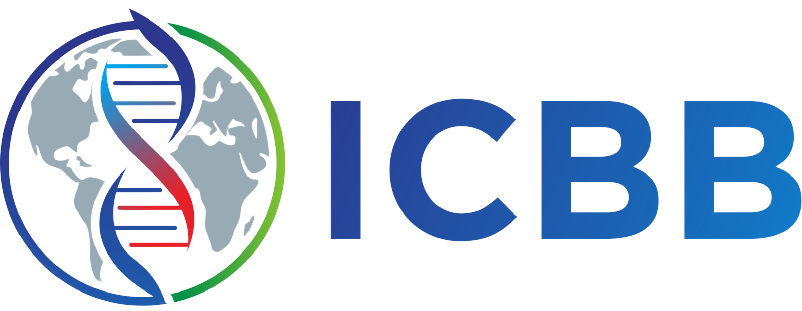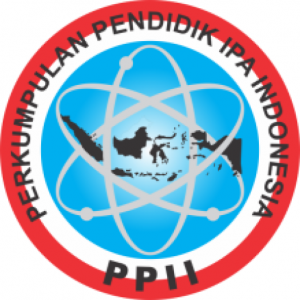Literature Review: The Potential of Phenolic Compounds as Allelopathic Agents in Mangifera indica
Authors
Zozy Aneloi Noli , Amanda Nurhafitri , Ayumi Rizci Puspita , Mellanie Alia Putri , Putra SantosoDOI:
10.29303/jbt.v25i1.8271Published:
2025-01-21Issue:
Vol. 25 No. 1 (2025): Januari - MaretKeywords:
Allelopathy, Mangifera indica, phenolic.Articles
Downloads
How to Cite
Downloads
Metrics
Abstract
Phenolic compounds are a group of secondary metabolites identified as having significant roles in various ecophysiological processes, including allelopathic activity. In Mangifera indica (mango), phenolic compounds contribute to chemical interactions between plants by releasing allelopathic substances that influence the growth and development of surrounding plant species. This study aims to review the potential of phenolic compounds in M. indica as allelopathic agents, focusing on identifying dominant types of phenolic compounds, allelopathic mechanisms, and their ecological impacts on plant communities. The research method employed is a literature review involving a search for relevant sources on Google Scholar covering the period from 2010 to 2024. Based on a review of various studies, it has been demonstrated that phenolic compounds in M. indica possess significant potential to inhibit the growth of competitors and can be utilized in environmentally friendly agricultural management.
References
Arora, S., Husain, T., & Prasad, S. M. (2024). Allelochemicals as biocontrol agents: Promising aspects, challenges and opportunities. South African Journal of Botany, 166, 503-511. https://doi.org/10.1016/j.sajb.2024.01.029
Ashapkin, V. V., Kutueva, L. I., Aleksandrushkina, N. I., & Vanyushin, B. F. (2020). Epigenetic mechanisms of plant adaptation to biotic and abiotic stresses. International journal of molecular sciences, 21(20), 7457 . https://doi.org/10.3390/ijms21207457
Aulia, H. N., & Riniarti, M. (2022). Pengaruh ekstrak daun bintaro dan mangga terhadap rumput teki (Cyperus rotundus L.). Jurnal Kehutanan Indonesia Celebica, 3(2), 107-119. http://dx.doi.org/10.33772/jc.v2i2
Badan Pusat Statistik (BPS). (2021). Statistik Pertanian. https://www.bps.go.id/
Cahyanti, L. D., Sumarni, T., & Widaryanto, E. (2015). Potensi alelopat daun pinus (Pinus spp.) sebagai bioherbisida pra tumbuh pada gulma krokot (Portulaca oleracea). Gontor AGROTECH Science Journal, 1(2), 21-31. https://doi.org/10.21111/agrotech.v1i2.262
Chatri, M., Jumjunidang, Zahratul, A., & Febriani, D. K. 2022. Aktivitas Antifungi Ekstrak Daun Melastoma malabathricum Terhadap Fusarium oxysporum dan Sclerotium rolfsii Secara In Vitro. Jurnal Agrotek Tropika. 10 (3) : 396. 10.23960/jat.v10i3.5713
Cheng, F., & Cheng, Z. (2015). Research progress on the use of plant allelopathy in agriculture and the physiological and ecological mechanisms of allelopathy. Frontiers in Plant Science, 6, 1020. https://doi.org/10.3389/fpls.2015.01020
Darmanti, S. (2018). Review: Interaksi alelopati dan senyawa alelokimia: Potensinya sebagai bioherbisida. Buletin Anatomi dan Fisiologi, 3(2), 181-187. https://doi.org/10.14710/baf.3.2.2018.181-187
Desalegn, T. (2014). Allelopathic effects of Lantana (Lantana camara L.) leaf extracts on germination and early growth of three agricultural crops in Ethiopia. Momona Ethiopian Journal of Science, 6(1),111-119. https://doi.org/10.4314/mejs.v6i1.102419
El-Metwally, I. M., Shehatab, S. A., Abdelgawad, K. F., & Elkhawaga, F. A. (2022). Utilization of phenolic compounds extracted from agro-industrial wastes as natural herbicides. Egyptian Journal of Chemistry, 65(2), 265-274. http://dx.doi.org/10.21608/ejchem.2021.85380.4167
Farida, A., Febrianto, E. B., Nurliana, N., Hasibuan, H. B., Tohir, K., & Ghani, B. A. (2023). Pengaruh pemberian alelopati ekstrak daun mangga kweni (Mangifera orodata Griff) terhadap pertumbuhan gulma teki (Cyperus rotundus). BEST Journal (Biology Education, Sains and Technology), 6(2), 976-982. https://doi.org/10.30743/best.v6i2.9219
Faridati, M. (2021). Potensi alelokimia ekstrak rimpang alang-alang (Imperata cylindrica) sebagai herbisida nabati terhadap penghambat perkecambahan dan pertumbuhan gulma bandotan (Ageratum conyzoides L.) [Doctoral dissertation, Universitas Islam Riau].
Fitmawati, F., Resida, E., Kholifah, S. N., et al. (2020). Phytochemical screening and antioxidant profiling of Sumatran wild mangoes (Mangifera spp.): A potential source for medicine antidegenerative effects [version 3; peer review: 2 approved]. F1000Research, 9, 220. https://doi.org/10.12688/f1000research.22380.3
Food and Agriculture Organization. (2017). FAOSTAT statistical database. http://www.fao.org/faostat/en/#home
Guntoro, G., Dibisono, M. Y., & Sinaga, A. (2020). Uji potensi alelopati ekstrak daun mangga (Mangifera indica L.) sebagai bioherbisida terhadap gulma babandotan (Ageratum conyzoides L.). Jurnal Agrium, 17(1). https://doi.org/10.29103/agrium.v17i1.2355
Hamideh, B., Seyed, Y., Salehi-Lisar. (2020). Agronomic Crops Response and Tolerance to Allelopathic Stress. 313-348. https://doi.org/10.1007/978-981-15-0025-1_17
Hussain, I., Singh, N. B., Singh, A., & Singh, H. (2017). Allelopathic potential of sesame plant leachate against Cyperus rotundus L. Annals of Agrarian Science, 15(1), 141-147. https://doi.org/10.1016/j.aasci.2016.10.003
Iman, J., Hala, M, Yaqub., Faten, I. (2023). Role of Phenolic Compounds in Allelopathic Activity. مجلة الكتاب للعلوم الصرفة, http://dx.doi.org/10.32441/kjps.07.02.p8
Kong, C. H., Li, Z., Li, F. L., Xia, X. X., & Wang, P. (2024). Chemically mediated plant-plant interactions: Allelopathy and allelobiosis. Plants, 13(5), 626. https://doi.org/10.3390/plants13050626
Kristiana, R. (2019). Mengkaji peranan alelokimia pada bidang pertanian. Bioedukasi UNS, 12(1), 41-46. https://doi.org/10.20961/bioedukasi-uns.v12i1.27398
Kumar, M., Saurabh, V., Tomar, M., Hasan, M., Changan, S., Sasi, M., Maheshwari, C., Prajapati, U., Singh, S., Prajapat, R. K., Dhumal, S., Punia, S., Amarowicz, R., & Mekhemar, M. (2021). Mango (Mangifera indica L.) leaves: Nutritional composition, phytochemical profile, and health-promoting bioactivities. Antioxidants, 10(2), 299. https://doi.org/10.3390/antiox10020299
Kumar, N., & Goel, N. (2019). Phenolic acids: Natural versatile molecules with promising therapeutic applications. Biotechnology Reports, 24, e00370. https://doi.org/10.1016/j.btre.2019.e00370
Kumar, V., Singh, A., & Kumar, R. (2015). Allelopathic potential of Mangifera indica L. on growth of some crops and weeds. Indian Journal of Weed Science, 47(3),234-237. https://doi.org/10.1111/wbm.12212
Ningsih, I. S., M, Chatri., L. Advinda., Violita. Flavonoid Active Compounds Found In Plants Senyawa Aktif Flavonoid yang Terdapat Pada Tumbuhan. Serambi Biologi, 8(2). https://doi.org/10.24036/srmb.v8i2.206
Nornasuha, Y., & Ismail, B. S. (2017). Sustainable weed management using allelopathic approach. Malaysian Applied Biology, 46(2). https://api.semanticscholar.org/CorpusID:215716297
Oktavianto, Y., Sunaryo, S., & Suryanto, A. (2015). Karakterisasi tanaman mangga (mangifera indica l.) Cantek, Ireng, Empok, Jempol di Desa Tiron, Kecamatan Banyakan Kabupaten Kediri (Doctoral dissertation, Brawijaya University). https://doi.org/10.21176/protan.v3i2.174
Prasetya, D. N., Zulkifli, T. T., Handayani, & Lande, M. L. (2018). Efek alelopati ekstrak air daun mangga (Mangifera indica L. var. Arumanis) terhadap pertumbuhan rumput teki (Cyperus rotundus L.). Jurnal Penelitian Pertanian Terapan, 18(2). Universitas Lampung, Bandar Lampung. http://dx.doi.org/10.25181/jppt.v18i3.678
Purba, R., Manalu, R. S., Simamora, T. G., & Harefa, M. S. (2023). Interaksi organisme terhadap perubahan lingkungan: Studi kasus dalam ekologi hutan. Jurnal Wilaya, Kota dan Lingkungan Berkelanjutan, 2(2). https://doi.org/10.58169/jwikal.v2i2.246
Safitri, E. I., S. Anggraeni., A. N, Utomo., D. Nisa., & Hidayati. (2023). Perbandingan Kadar Flavonoid dan Fenolik Ekstrak Etanol Kulit dan Biji Mangga (Mangifera indica L.) Varietas Arummanis dan Manalagi. Jurnal Farmasi dan Kesehatan, 12(1). http://dx.doi.org/10.48191/medfarm.v12i1.172
Sari, N & Sujarwati. (2023). Phytochemical Screening and Antioxidan Activity of Several Types of Mango Seeds. Jurnal Biologi Tropis, 23(3), 619-625. Retrived from http://jurnalfkip.unram.ac.id/index.php/JBT/article/view/495
Sarmiento, W. G., Sáyago-Ayerdi, S. G., Goñi, I., Gutiérrez-Miceli, F. A., Archila, M. A., Rejón-Orantes, J. D. C., ... & Ruíz Valdiviezo, V. M. (2020). Nutrients. Nutrients, 12(3), 683. https://doi.org/10.3390/nu12030683
Sembiring, H., Harahap, S., & Lubis, F. (2020). The potential of mango (Mangifera indica L.) as functional food: A review. Journal of Food Science and Technology, 57(7), 2925-2936. https://doi.org/10.1007/s11483-020 01938-6
Shan, Z., Zhou, S., Shah, A., Arafat, Y., Arif Hussain Rizvi, S., & Shao, H. (2023). Plant allelopathy in response to biotic and abiotic factors. Agronomy, 13(9), 2358. https://doi.org/10.3390/agronomy13092358
Siregar, E. N., Nugroho, A., & Soelistyono, R. (2017). Uji alelopati ekstrak umbi teki pada gulma bayam duri (Amaranthus spinosus L.) dan pertumbuhan tanaman jagung manis (Zea mays L. saccharata). (Doctoral dissertation, Brawijaya University).
Suzuki, M., Khan, M. S. I., Iwasaki, A., Suenaga, K., & Kato-Noguchi, H. (2017). Allelopathic potential and an allelopathic substance in mango leaves. https://doi.org/10.1080/09064710.2016.1215517
Tacias-Pascacio, Veymar., Castañeda, D., F, Roberto., B, Angel., M, Gordillo, R, Gutiérrez, Luis-Felipe., P, López, Neith., Cuevas-Bernardino, J.C., A, Teresa. (2022). Phenolic compounds in mango fruit: a review. Journal of Food Measurement and Characterization. 16. 10.1007/s11694-021-01192-2. https://link.springer.com/article/10.1007%2Fs11694-021-01192-2
Utami, S., Baskoro, K., Khotimperwati, L., & Murningsih. (2019). Keragaman varietas mangga ( Mangifera indica L.) di Kotamadya Semarang, Jawa Tengah. Bioma, 21 (2). https://doi.org/10.14710/bioma.21.2.121-125
Xu, Y., Chen, X., Ding, L., & Kong, C.-H. (2023). Allelopathy and allelochemicals in grasslands and forests. Forests, 14(3), 562. https://doi.org/10.3390/f14030562
Yulifrianti, E., Linda, R., & Lovadi, I. (2015). Potensi ekstrak daun mangga (Mangifera indica L.) terhadap pertumbuhan gulma rumput ginting (Cynodon dactylon (L.) Pers). Jurnal Protobiont, 4(1), 46-51. https://doi.org/10.26418/protobiont.v4i1.8719
License
Copyright (c) 2025 Zozy Aneloi Noli, Amanda Nurhafitri, Ayumi Rizci Puspita, Mellanie Alia Putri, Putra Santoso

This work is licensed under a Creative Commons Attribution 4.0 International License.

Jurnal Biologi Tropis is licensed under a Creative Commons Attribution 4.0 International License.
The copyright of the received article shall be assigned to the author as the owner of the paper. The intended copyright includes the right to publish the article in various forms (including reprints). The journal maintains the publishing rights to the published articles.
Authors are permitted to disseminate published articles by sharing the link/DOI of the article at the journal. Authors are allowed to use their articles for any legal purposes deemed necessary without written permission from the journal with an acknowledgment of initial publication to this journal.


























